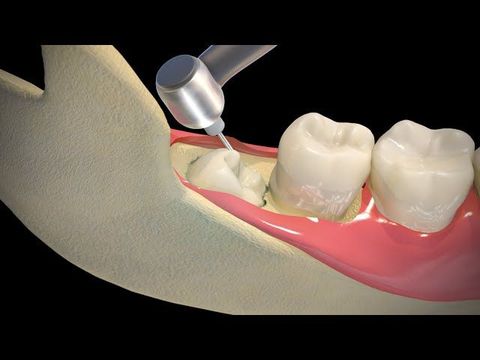Telemedicine Services Overview: Discover Key Facts, Learn Benefits, and Gain Useful Insights
Telemedicine refers to the use of digital communication technologies to support medical guidance, remote consultations, monitoring, and information exchange. It developed as an extension of traditional healthcare to bridge the gap created by distance, limited access to specialists, and the growing need for timely clinical advice.
Advances in broadband networks, digital applications, electronic record systems, and secure communication tools have made virtual interactions increasingly reliable. Telemedicine emerged to simplify access to professional guidance and ensure that individuals, especially those in remote regions, could obtain timely medical insight without needing physical travel.
Digital transformation in healthcare has been a major catalyst for telemedicine, with improvements in smartphones, wearable health devices, and cloud-based platforms enabling seamless communication between clinicians and individuals. This model supports the broader movement toward digitally connected healthcare ecosystems and data-driven decision-making.
Why Telemedicine Matters in Today’s Healthcare Environment
Telemedicine has become an essential part of modern public health strategy. It benefits individuals, families, healthcare professionals, community health programs, and vulnerable populations who face barriers such as long travel distances or limited local healthcare infrastructure.
It helps address several key challenges:
-
Geographical gaps: Individuals in rural or remote areas can connect with specialists located elsewhere.
-
Reduced travel: People with mobility limitations or chronic conditions can receive guidance from home.
-
Public health preparedness: During pandemics or outbreaks, virtual interactions reduce overcrowding in physical facilities.
-
Continuity of care: Telemedicine supports follow-ups, long-term monitoring, and health record accessibility.
-
Workforce efficiency: Healthcare systems can better manage demand by integrating virtual check-ins and digital triage.
Several high-value informational keywords are often associated with this field, including digital health analytics, remote patient monitoring, health data integration, clinical decision support tools, and virtual healthcare communication. These topics highlight telemedicine’s growing importance for research, policymaking, and healthcare planning.
Below is a simple table summarizing key focus areas in telemedicine today:
| Focus Area | Description |
|---|---|
| Remote Monitoring | Digital tracking of health indicators through wearable devices |
| Virtual Consultation | Real-time communication through secure video or messaging platforms |
| Digital Health Records | Cloud-based systems for storing and sharing medical information |
| Health Analytics | Data analysis tools supporting treatment planning and insights |
| Virtual Triage | Prioritizing patient cases using digital assessment tools |
Recent Developments and Trends (2024–2025)
Telemedicine has continued evolving rapidly, with several key developments over the past year.
In early 2024, many countries updated digital health frameworks to strengthen data protection, patient verification, and cross-platform integration. These changes encouraged safer communication and introduced more standardized procedures across regions.
Throughout mid-2024, wearable health technology saw major innovation. Devices that track heart rhythm, glucose trends, and sleep quality became more accurate and compatible with telemedicine platforms. This shift supported more reliable remote monitoring and improved clinical interpretation of daily health data.
Late 2024 to early 2025 witnessed increased adoption of AI-supported digital health tools. These include symptom analyzers, automated reminders, virtual health logs, and digital imaging review assistance. While these tools do not replace medical evaluation, they provide structured data that clinicians can use for informed decision-making.
Several countries also expanded digital health education programs in 2025 to improve literacy around telemedicine tools and cybersecurity awareness. These programs helped individuals understand how to handle health data, verify official platforms, and use communication tools safely.
Laws, Regulations, and Policy Considerations
Telemedicine functions within national healthcare systems and is shaped by country-specific laws and guidelines. These rules help ensure data protection, ethical communication, and transparency.
Most countries follow similar regulatory principles:
-
Data Privacy and Security: Platforms must follow encryption standards, secure data storage policies, and identity verification guidelines.
-
Record Keeping: Digital health records must be preserved for specified durations under standardized formats.
-
Licensing Requirements: Healthcare professionals typically need valid licenses within the region where guidance is provided.
-
Cross-Border Restrictions: Some regions limit telemedicine interactions across state or national boundaries without special authorization.
-
AI and Digital Tool Governance: Many countries have introduced policies for safe use of AI-supported health tools, emphasizing human oversight.
Several national health authorities introduced updated digital guidelines in 2024 and 2025 to strengthen the reliability of telemedicine platforms. These updates often include cybersecurity recommendations, data breach reporting requirements, and more structured protocols for remote monitoring programs.
Useful Tools, Platforms, and Resources
A range of digital tools support telemedicine activities. These include platforms for communication, health data storage, educational resources, and remote monitoring systems. While availability varies by region, the following categories are widely used:
Communication and Virtual Consultation Tools
-
Secure video communication platforms
-
Encrypted messaging systems for follow-up communication
-
Platforms integrated with electronic health records
Health Tracking and Remote Monitoring Apps
-
Wearable device dashboards
-
Blood pressure, glucose, or heart rhythm-monitoring tools
-
Daily health-log and symptom-tracking applications
Health Information Portals
-
Government health information websites
-
Public digital health libraries
-
Verified health education apps for general medical knowledge
Data and Analytics Tools
-
Remote monitoring dashboards
-
Digital health analytics tools for clinicians
-
Platforms that organize long-term health trends and reports
Supportive Templates and Digital Resources
-
Health observation sheets
-
Symptom-tracking templates
-
Digital appointment-record logs
-
Data-sharing permission forms
These tools help individuals manage their health information, support digital literacy, and encourage structured interaction between clinicians and users.
Frequently Asked Questions
What is the main purpose of telemedicine?
Its purpose is to make healthcare guidance more accessible through digital communication. It supports timely interaction, remote monitoring, and easier access to specialists.
Is telemedicine suitable for all types of medical situations?
Not all situations can be addressed remotely. Telemedicine is effective for general guidance, routine follow-ups, and digital assessment, but in-person evaluation may still be necessary depending on the condition.
How is personal health data protected during telemedicine interactions?
Most platforms use encryption, secure login systems, and national digital health regulations that govern data handling, storage, and identity verification.
Can telemedicine support long-term health management?
Yes, telemedicine can support chronic condition monitoring, progress tracking, sharing of health logs, and regular digital check-ins using structured data from apps and devices.
What technologies are commonly used in telemedicine?
Video platforms, secure messaging tools, wearable devices, digital records, cloud data systems, and health analytics tools are widely used in telemedicine ecosystems.
Conclusion
Telemedicine has become an essential component of modern healthcare, connecting digital tools with clinical expertise to enhance accessibility, monitoring, and communication. It plays a vital role for individuals in remote areas, people managing long-term conditions, and communities seeking more efficient interaction with healthcare systems.
Recent developments in digital health, wearable technology, and data analytics continue to expand telemedicine’s capabilities. Ongoing regulatory updates in many regions ensure that virtual communication remains secure, transparent, and aligned with public health goals.
As telemedicine evolves, its combination of remote connectivity, digital tools, and structured data integration will continue to support healthcare systems and provide valuable insights for the future of digital health.
Disclaimer: The information provided in this article is for informational purposes only. We do not make any claims or guarantees regarding the accuracy, reliability, or completeness of the information presented. The content is not intended as professional advice and should not be relied upon as such. Readers are encouraged to conduct their own research and consult with appropriate professionals before making any decisions based on the information provided in this article.






